
Official Edgar Rice Burroughs Tribute and Weekly Webzine Since 1996 ~ Over 10,000 Webpages in Archive Volume 3634 |

Official Edgar Rice Burroughs Tribute and Weekly Webzine Since 1996 ~ Over 10,000 Webpages in Archive Volume 3634 |
![]()
Beasts of Barsoom
By Sean Phillips
![]()
.
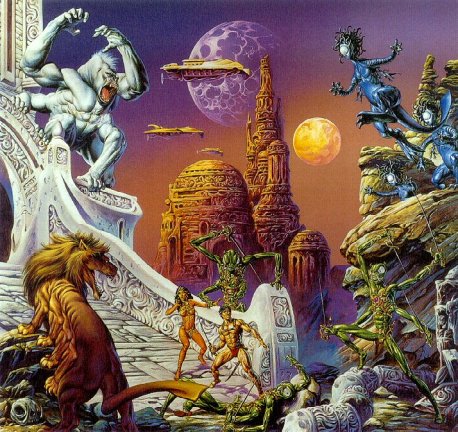
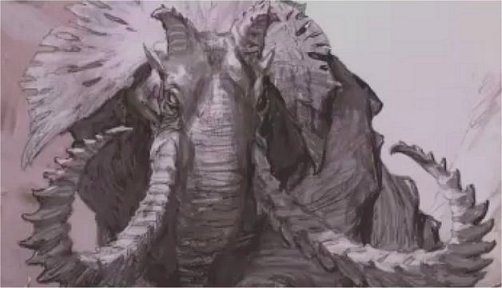
|
|
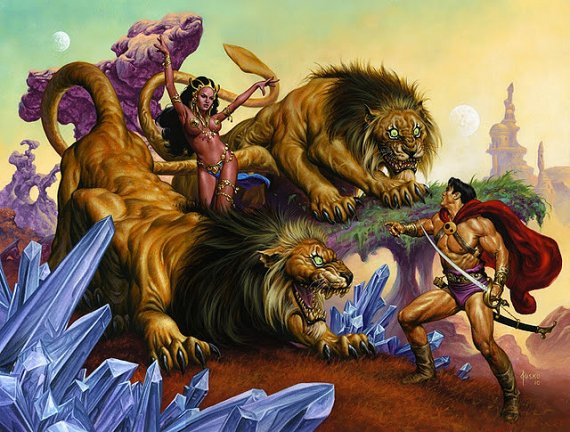 .
.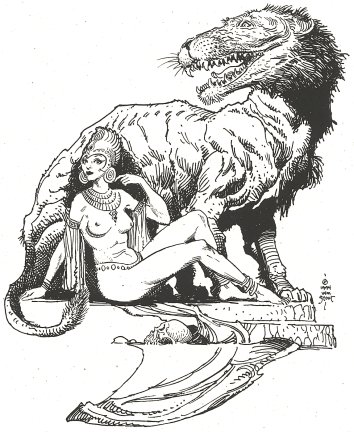
The banth is a ten-legged Barsoomian "lion." Of course, the banth is not a true lion, or member of the feline family. They naturally prey upon the thoat, but any animal or being is a potential meal for the giant banth. Banths have protruding green eyes, hairless bodies, and stiff-bristling manes. They are sleek in the manner of earthly felines. Their long jaws house a double row of hooked teeth, like the smaller calot, suggesting a common ancestry somewhere in the dim Barsoomian past. Obviously, it is a separate (non-feline) family of mammalian carnivores unique to Barsoom. All life-forms on the planet apparently began with ten legs; those with less evidently dispensed with those limbs during the long course of Barsoomian evolution. It may, in fact be mere comi coincidence that Earth's vertebrate life forms sport four limbs. Other six or more legged plans may exist throughout the universe. |
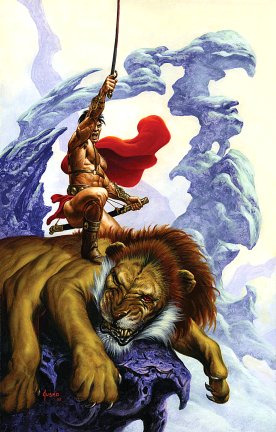 .
.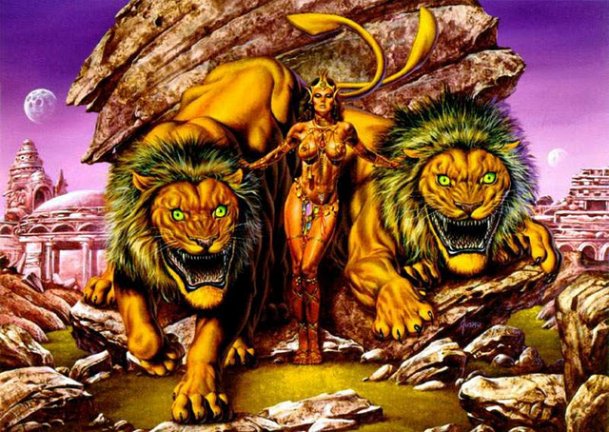
|
|
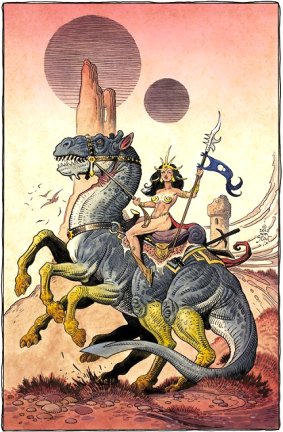
Thoats are eight-legged Barsoomian "horses." Again, they are not true equines, or related to anything else on earth. They are often vicious and foul-tempered, but the sentient Martian races can train them as steeds, and use them in gladiatorial jousting. Their powerful legs sport great padded toes, the hoof never having evolved upon Mars. |
|
|
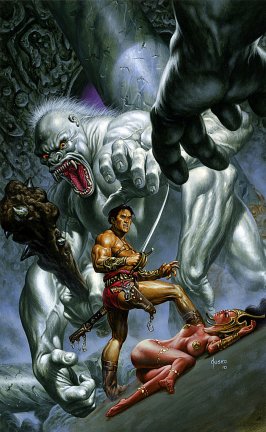 .
.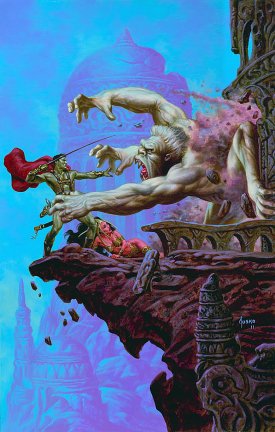
The monstrous white apes of Barsoom are an anomaly. They have the multiple limbs as the majority of other life forms indicating a common ancestry with all other life on the planet; however unlike the thoat, banth, and others, they apparently share the same family as the true primates of earth. John Carter even describes the face of the white ape as being strikingly similar to the African gorilla. |
|
|
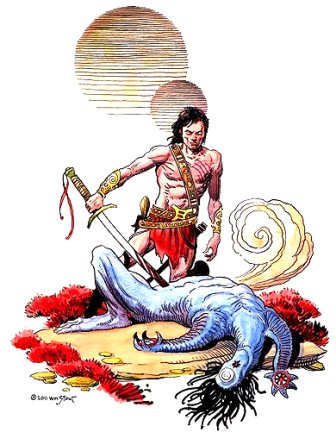
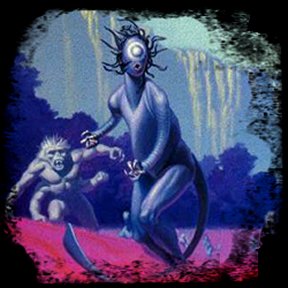 |
The bizarre "plant-men" of Barsoom are perhaps the weirdest life form
to have evolved upon the planet's surface. They are virtually unique to
the Valley Dor, the (disappointingly hellish) Martian version of heaven.
Vaguely humanoid in outline, the plant-men are a non sentient herding species.
They perhaps are an example of a protist (kingdom of life forms that exhibit both plant and animal characteristics) that has developed into a large multi-cellular species. They sport a crop of angleworm-like tendrils for "hair," a single, whitish eye that takes up their entire "face," a single nostril-like orifice for breathing, arm-like appendages which terminate in mouthlike orifices (through which the creatures graze), and massive, powerful tail. Their entire bodies are a weird, ghoulish blue color. Though they are "normal" four-limbed creatures, the plant-men have undoubtedly evolved along as separate trajectory than the other of Barsoomian species. |
|
|
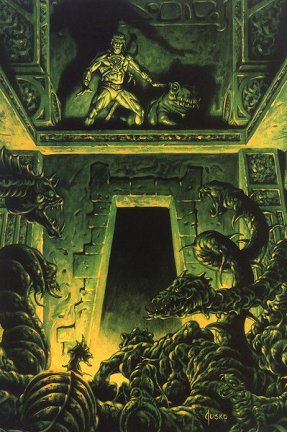
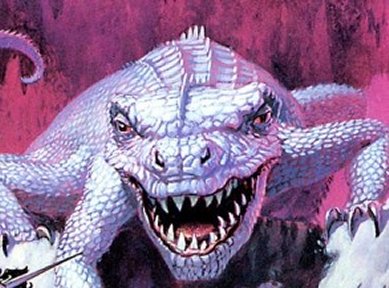 |
Reptiles on modern-day Mars are exceptionally rare, though they were common during the planet's infancy, although whether the planet experienced a true Mesozoic era is unknown. And it is easy to understand why. Once Barsoom was warm and wet, with great oceans teaming with scaly life, and vast regions of rainforest. Creatures like the great albino cavern-dwelling lizard pictured above have lingered in forgotten pockets here and there, and are essentially prehistoric survivors. As monsters such as Pellucidar's zarith are generally considered extinct on Jasoom (Earth), surviving reptilian giants persist in realms such as Pal-ul-don and Caspak, as well as the inner earth. And so it is on Barsoom as well. John Carter noted a number of reptiles that bore resemblance to prehistoric fossil remains in the infamous pit of serpents. Like the mammals, Barsoom's reptilian species (excluding serpents) sport multiple legs, indicating that reptiles gave rise to the mammals on Barsoom, just as they did upon earth. |
|
|
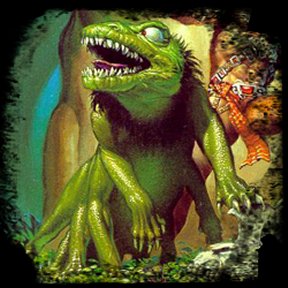
The calot is something of an equivalent of a Martian canine, as the banth has evolved parallel with the great cats. Calots chase down their prey on ten powerful stout legs, and latch onto it with their multiple rows of hooked teeth. Calots are often trained by the red and green Martians and are fiercely loyal, bonding with their owners after the same manner as earthly canines. The most famous calot is Woola, who remained loyal to Carter after saving him from a Martian ape. |
|
|
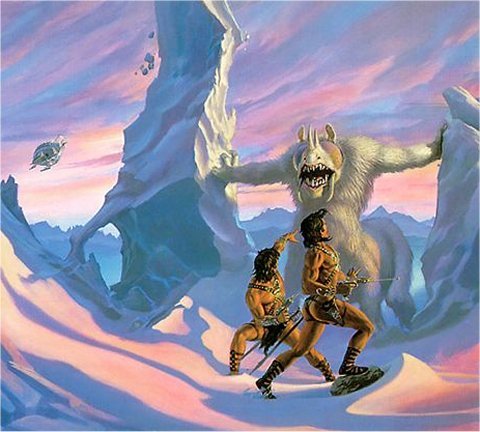
The apt is a monstrous, white-furred denizen of polar Mars. It sports six limbs, four o which carry it over the glaciers, the other two it can grasp prey with. Its head is described as something like the earthly hippopotamus (although the Whelan illustration above depicts it as a bit more rhinocerine), with mighty fanged jaws. Two horns of bone depend on either side of the great lower jaw. Its huge, insectasoid eyes encompass the majority of the apt's face. Each eye is composed of thousands of ocelli, all of which it can open or close independently and at will. |
|
|
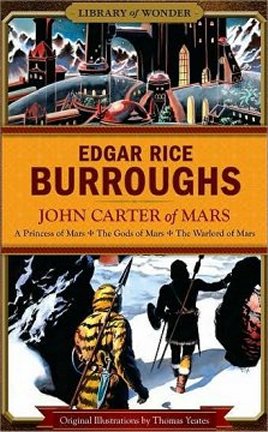
The orluk is another arctic monster, described as "a great elephantine beast of prey." it has yellow and black striped pelt. It conjures up the image of a giant, furred, multi-legged carnivorous mammoth striped in gold and black. I could find no image (so far), but in the Thomas Yeates illustration above, some men appear to be clothed in orluk hides. |
|
|
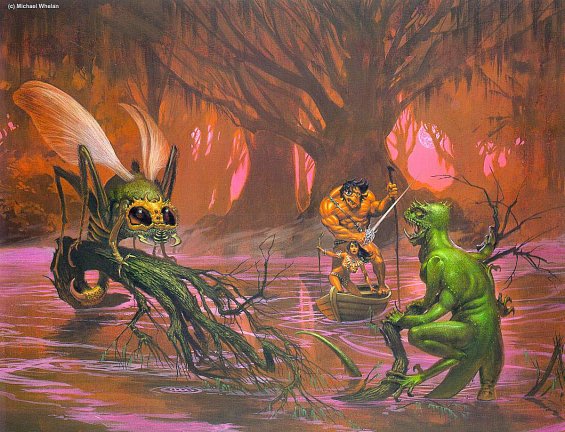 .
.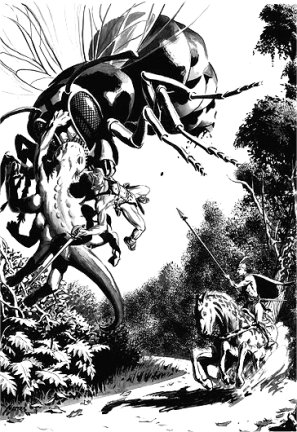
The sith is monstrous wasp-like insect-creature common to the Forest of Kabool, the size of a hereford bull. It has thrumming wings and a deadly tail-stinger. The huge compound eyes are its one vulnerability. In the Thomas Yeates illustration above, Woola attacks this weakness, driving his rows of fangs deep into the eye. The insect in the Whelan painting may, in fact, be a related species native to the Tantolian marshes. |
|
|
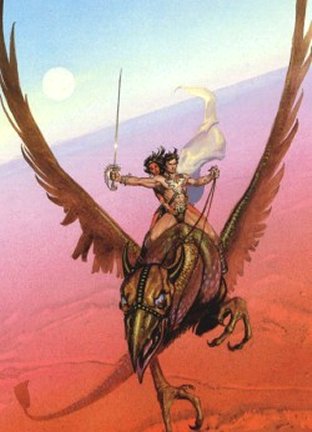
A giant, "prehistoric" Martian bird with a 40-ft wingspread. They are used as beasts of burden in the country surrounding the Tantolian Marshes. A relic from Barsoom's primeval past, the malagor combines features both avian and reptilian, much like the dinosaur ancestors of birds on earth. |
|
|
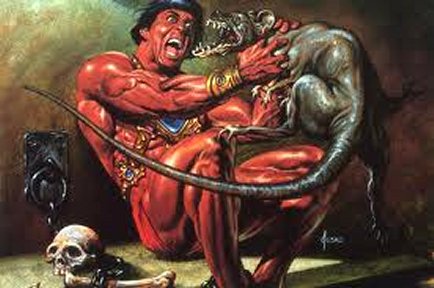
The ulsio is a repulsive scavenger found underneath barsoomian cities, rather like a large, multi-legged rodent. The term "ulsio" is not one of endearment. |
|
|
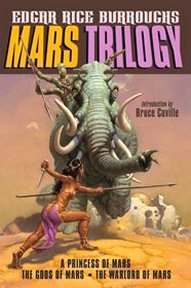

The zitidars are gigantic draft animals used by the red and green races of Barsoom. They are proboscidian in form, resembling a Terran elephant or mastodon, though unrelated. |
|
|
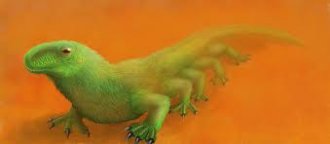
|
|
|
|
|
It is possibly a diminutive relative of the much larger banth. |
|
|
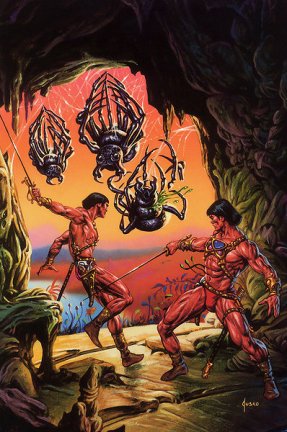
|
|
|
|
Other animals have been added to the Barsoomian fauna in comics and pastiches, most notably in the DC comics Tarzan family series. There was a one-shot story called "Amazon of Barsoom," which told the story of Martian princess. A predatory lizard-beast is pillaging the eggs when the princess hatches. Before she is eaten herself she slays the creature with his own sword. The "cannibal lizard" seems more than a mere beast however, as he wears both a tunic and a sword with scabbard! Later the Amazon of the title saves her Jeddak father from the "demon apes of the misty caves." She slaughters the red-furred simians en masse, proving herself as worthy to her father as any son would have been. Now about those apes -- now we have TWO primate species (other than the red, yellow, black-skinned humans) native to Mars! |
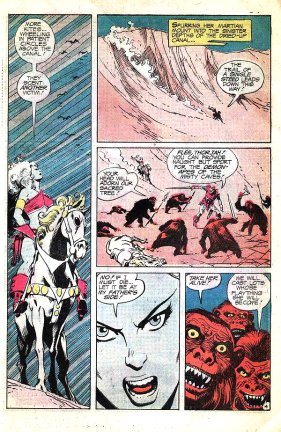
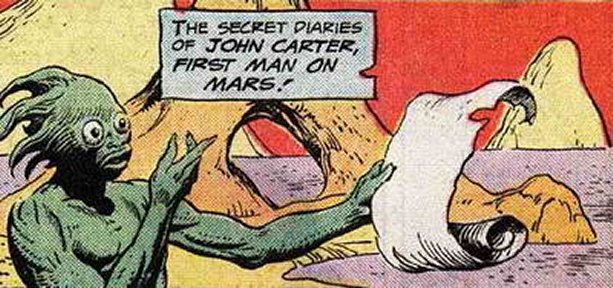
Another, separate, storyline involves a series of "lost journals" or John Carter. They are discovered in a trunk by a member of the aquatic Myopsian race (which are, in fact, native to Amtor (Venus), NOT Barsoom! |
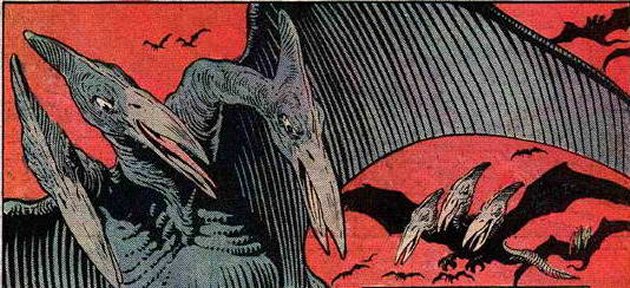

BILL
HILLMAN
Visit
our thousands of other sites at:
BILL
AND SUE-ON HILLMAN ECLECTIC STUDIO
All
ERB Images© and Tarzan® are Copyright ERB, Inc.- All Rights Reserved.
All
Original Work © 1996-2012 by Bill Hillman and/or Contributing Authors/Owners
No
part of this web site may be reproduced without permission from the respective
owners.